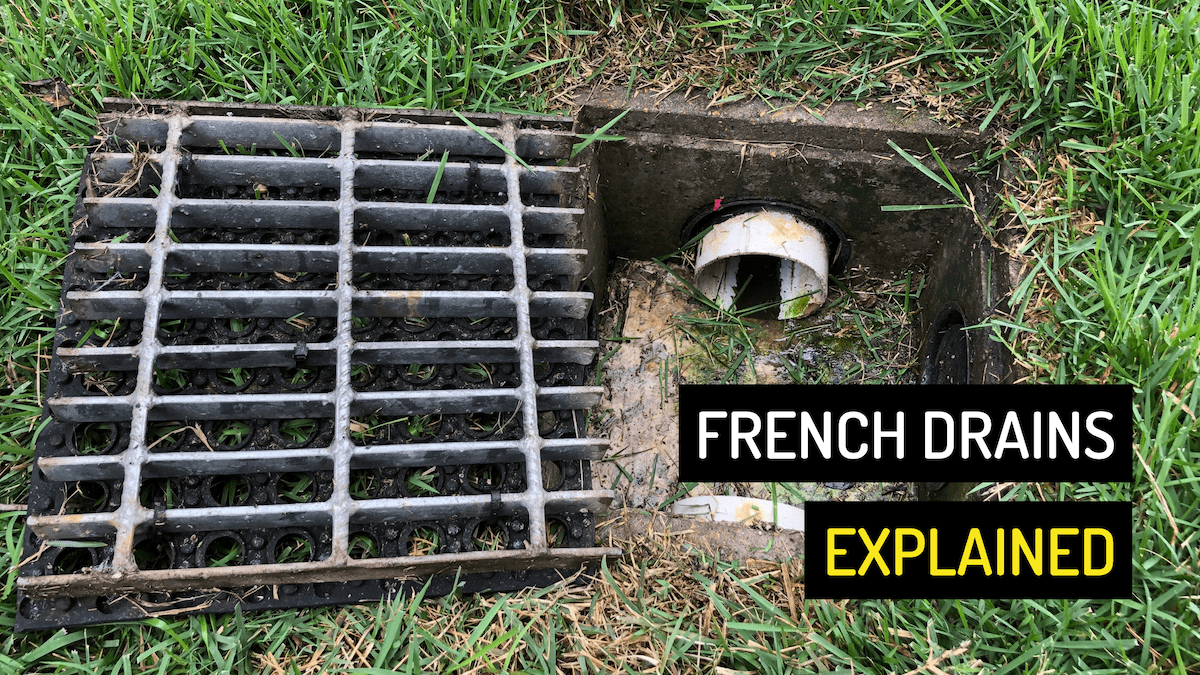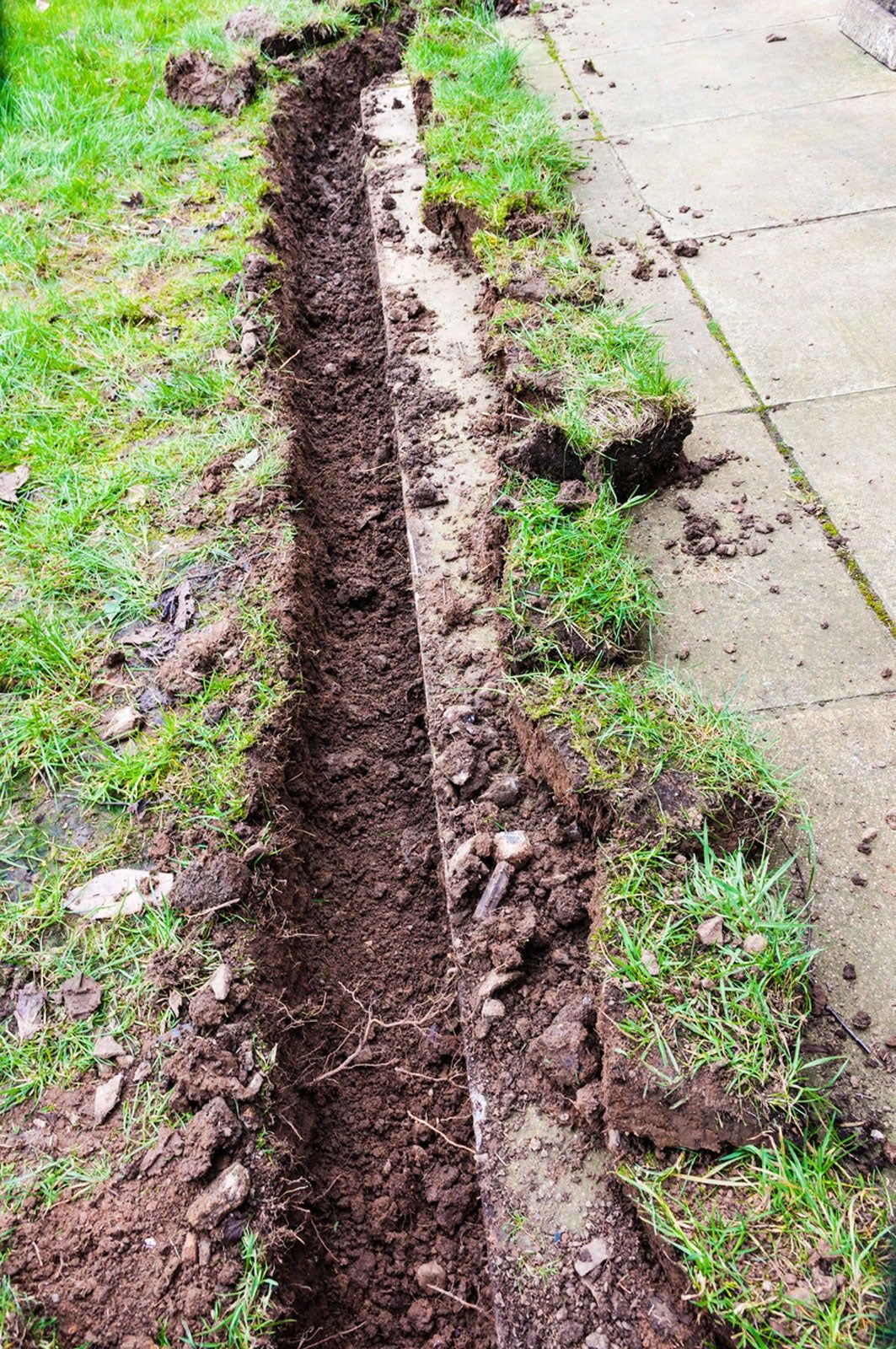The Crucial Guide to Maintaining Your French Drainpipe for Long-Lasting Efficiency
Preserving your French drainpipe is key to its performance and your home's protection. Regular checks can conserve you from costly repairs and water damages. You'll desire to understand what signs to look for and exactly how frequently to examine your system. And also, comprehending the cleaning procedure can make a considerable difference. Let's explore the necessary actions for guaranteeing your drainpipe works well for years to come.
Comprehending the Feature of a French Drainpipe
A French drainpipe is an important element in taking care of water around your home. It directs excess water far from your foundation, avoiding flooding and damage. When heavy rainfall falls, the drainpipe accumulates water via a perforated pipe hidden in gravel. This system permits water to move easily, minimizing stress on your cellar walls and reducing the risk of leaks.You might ask yourself just how it operates in practice. As water saturates the soil, gravity pulls it towards the drain. The perforated pipe records this water, carrying it to a marked drain location or tornado sewer. This procedure keeps your lawn completely dry and protects your home's structural integrity.Understanding exactly how a French drain features is essential to appreciating its value. By effectively directing water away, it aids preserve a secure and dry living setting. Keeping your French drain in top condition warranties you stay clear of expensive repairs down the line.
Routine Assessments: What to Look For
When you're checking your French drain, beginning by looking for any type of obstructions that could be blocking water flow. Focus on indications of surface disintegration around the drain, as this can indicate prospective concerns. Regular analyses will aid keep your drainage system working effectively.
Blocked Drain Assessment
How can you tell if your French drain is blocked? Watch for water pooling in your yard, specifically after heavy rainfall. If you notice locations where water collects rather than draining pipes, that's a warning. You should also inspect the drainpipe electrical outlet; if water isn't moving out as it should, there's most likely an obstruction. Pay attention for unusual gurgling noises, which can indicate trapped air. Furthermore, evaluate the drain's surface for any greenery development, as roots can block the system and penetrate. Lastly, if you smell mildewy smells, it can indicate stationary water created by an obstruction. Frequently examining these signs can aid you maintain your French drain efficiently and stop costly fixings.
Surface Erosion Check

Cleaning Your French Drain: Step-by-Step Guide
Cleansing your French drain is essential for maintaining it functioning correctly. You'll require some particular tools and a clear process to ensure every little thing runs smoothly. Allow's go through the steps and ideas for preserving your drainpipe effectively.
Tools You'll Need
To tackle the task of cleaning your French drainpipe successfully, you'll intend to gather a few crucial tools. Order a strong set of gloves to secure your hands from debris and sharp things. A small shovel or trowel will aid you get rid of dirt or clogs around the drainpipe. For removing the interior, a plumbing professional's snake or a high-pressure water nozzle can be exceptionally useful. You'll likewise need a bucket for collecting any kind of debris you pull out. Lastly, having a garden hose pipe accessible will make it easier to wash out the drainpipe and assure it's streaming efficiently. With these tools ready, you'll be established for a comprehensive cleaning session!
Cleaning Refine Steps
Beginning by assessing the area around your French drainpipe for any type of visible particles or obstructions. Eliminate leaves, branches, or dirt that might block water flow. Next off, check the inlet and electrical outlet locations; clear any kind of obstructions to ensure correct drain. Use a yard hose to flush the drain, guiding water right into the inlet. This assists remove any kind of gathered sludge or debris. Consider utilizing a plumbing's serpent to damage them up if you see relentless obstructions. After cleansing, check the crushed rock around the drainpipe; restore it if it's gotten rid of. Verify the drainpipe covers are intact and firmly in area to avoid debris from going into. Regular cleansing keeps your French drain operating efficiently.
Upkeep Regularity Tips
While regular upkeep is essential for your French drain's long life, recognizing just how usually to preserve it can make all the difference. Ideally, you ought to examine your French drain at the very least two times a year, preferably in spring and fall. After heavy rains or snowmelt, check for obstructions or debris. If you see any kind of standing water, it's time to clean your drain.In locations with heavy vegetation, more constant upkeep-- concerning every three months-- may be needed. Additionally, take into consideration cleansing your French drainpipe after significant tornados or if you observe water pooling in your lawn. By remaining proactive, you'll assure your French drainpipe features effectively and shields your building from water damage. Regular checks will save you time and money in the long run.
Identifying Common Concerns and Their Solutions
It's essential to recognize common concerns with your French drainpipe and implement reliable options when you see water merging in your backyard or damp places in your basement. One frequent trouble is obstructing, often caused by debris like fallen leaves or debris. To repair this, you can use a pipes snake or a high-pressure water jet to clear blockages.Another issue may be improper slope. If your drainpipe isn't sloped correctly, water will not move away from your home. You can readjust the slope by excavating and repositioning the drain pipe.Lastly, look for damages or fractures in the drainpipe itself. Replacing the harmed sections is crucial for peak performance if you find any type of. By addressing these problems without delay, you'll help assure that your French drain remains to function successfully, securing your property from water damages and keeping a completely dry, secure environment.
Seasonal Upkeep Tips for Your French Drain
Dealing with usual problems with your French drainpipe is just the initial step in assuring its long-term performance. Seasonal maintenance is essential for peak efficiency. In the spring, remove leaves and debris that may have built up during winter months. Look for any blockages in the outlet or catch container, as water needs a clear course to move freely.During summer season, examine your drainpipe for any indications of working out or moving soil. Make sure it's still degree and functioning effectively. As loss methods, clean any fallen entrusts to prevent clogs prior to winter arrives.In winter season, expect freezing temperatures. Make sure your drainpipe isn't at danger of cold if you live in a cool environment. Shielding revealed pipelines can help. Regular checks and timely maintenance can stop expensive repairs and maintain your French drainpipe functioning successfully year-round. Keep positive and delight in peace of mind understanding your drainage system remains in great form!
When to Call an Expert
When to call in an expert can save you time and protect against additional damages to your French drain, knowing. If you observe consistent standing water in your yard, it's a clear sign that your drain may be obstructed or damaged. Don't overlook strange odors, as they can show visit the site sewer backup or degeneration, which requires prompt attention.If you find that your drainpipe isn't functioning correctly after attempts to clean or keep it, it's time to get to out for specialist help. Additionally, if you're not sure about the underlying concerns or lack the essential devices, employing a professional can provide peace of mind.Finally, if your French drain is old or has experienced significant damage, professional evaluation can figure out whether repair services or full replacement is required. Trust the professionals to assure your drainage system works successfully for years ahead.
Tips for Protecting Against Future Drainage Problems
To keep your French drainpipe functioning successfully, consistently click to read more evaluating and maintaining it can make all the difference. Beginning by clearing particles, leaves, and dust from the surface and drainpipe openings. This prevents blockages that can lead to water backup. Inspect the gravel around the drainpipe; if it's compressed or worn down, consider adding fresh crushed rock to keep excellent flow.Next, draw away water away from your drainpipe by making certain seamless gutters and downspouts are clear and guiding water a minimum of 3 feet away from your structure. On a regular basis evaluate for any type of indications of damage or drooping. If you notice concerns, resolve them immediately.Finally, think about mounting a filter or a catch container to trap bigger particles before it goes into the drainpipe. By remaining proactive with these ideas, you'll lessen the threat of future water drainage problems and maintain your French drainpipe in leading shape.
Frequently Asked Concerns
For how long Does a French Drain Usually Last?
A French drainpipe typically lasts around 30 to 40 years, depending upon the products used and upkeep (Portland French Drain). If you maintain up with regular checks, you can extend its life expectancy also further
Can I Install a French Drain Myself?
Yes, you can set up a French drainpipe yourself if you have actually got the right tools and understanding. Simply ensure to prepare thoroughly, adhere to regional regulations, and warranty appropriate drain to avoid future concerns.
What Products Are Utilized in a French Drain?
You'll require perforated pipe, gravel, landscape textile, and a strong water drainage pipeline for your French drainpipe. These products help reroute water effectively, protecting against flooding and keeping your residential or commercial property completely dry and secure from water damage.

Is a Permit Required to Mount a French Drainpipe?
You'll likely need a permit to mount a French drain, depending upon neighborhood regulations. Consult your community to guarantee you follow any type of necessary standards and avoid prospective concerns during installment.
What Are the Expenses Connected With French Drain Maintenance?
Maintaining a French drainpipe commonly sets you back between $100 and $500 every year. You'll require to think about expenses for cleaning, repair work, and examinations. Regular maintenance aids stop bigger expenditures and assurances your system works effectively for years - Portland French Drain. When you're examining your French drainpipe, start by inspecting for any blockages that could be blocking water flow. By view staying aggressive, you'll assure your French drain functions effectively and safeguards your residential or commercial property from water damage. When you observe water pooling in your lawn or damp places in your basement, it's vital to recognize common problems with your French drainpipe and apply effective solutions. You can change the slope by excavating and rearranging the drain pipe.Lastly, check for damages or splits in the drain itself. Inspect the gravel around the drainpipe; if it's compressed or eroded, take into consideration including fresh crushed rock to maintain suitable flow.Next, divert water away from your drainpipe by making certain rain gutters and downspouts are clear and routing water at the very least three feet away from your structure
 Spencer Elden Then & Now!
Spencer Elden Then & Now! Molly Ringwald Then & Now!
Molly Ringwald Then & Now! Sam Woods Then & Now!
Sam Woods Then & Now! Julia Stiles Then & Now!
Julia Stiles Then & Now! Nancy McKeon Then & Now!
Nancy McKeon Then & Now!